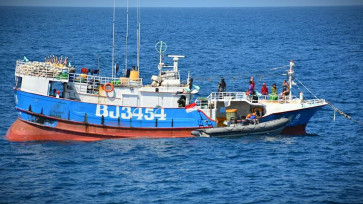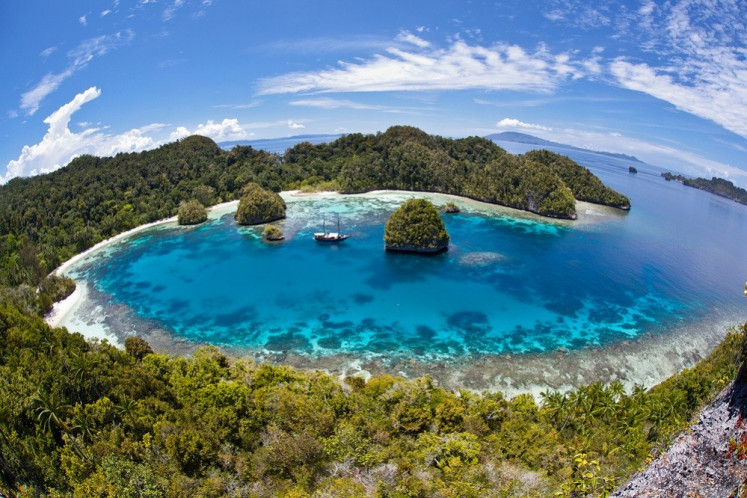Popular Reads
Top Results
Can't find what you're looking for?
View all search resultsPopular Reads
Top Results
Can't find what you're looking for?
View all search resultsPreserving groundwater for future generations
The future availability of freshwater is being harmed by the consumption of groundwater. Groundwater is a non-renewable resource that is typically collected using a jet pump for everyday consumption.
Change text size
Gift Premium Articles
to Anyone

T
he future availability of freshwater is being harmed by the consumption of groundwater. Groundwater is a non-renewable resource that is typically collected using a jet pump for everyday consumption. A full water cycle is necessary to restore groundwater since it depletes more quickly than it can replenish. A portion of the utilized water remains on the surface, therefore some of the water may not be able to reach the appropriate level. As a result, the unsustainable use of groundwater may cause a city's ground level to sink, increasing the risk of flooding. In extreme cases, the city itself may be submerged by the sea in the future. Therefore, it is more sustainable to utilize tap water provided by the Regional Drinking Water Company (PDAM). However, transitioning from groundwater to tap water consumption can be challenging.On the demand side, consuming groundwater is more preferable for households than tap water provided by PDAM because it is easier to get. PDAM’s tap water coverage may also not be available for all households in remote areas or even in cities. According to a report from the Public Works and Housing Ministry, the average coverage of PDAM’s tap water coverage was only 28 percent of the population in PDAM’s jurisdiction in 2022. This results in a lack of options for consumers to acquire fresh water, forcing them to search for groundwater.Furthermore, the cheap cost of acquiring groundwater hampers the urgency for people to change to tap water. For example, the cost of tap water in Jakarta provided by the city-owned water company PAM Jaya for household consumption ranges from Rp 3,550 (24 US cents) to Rp 9,800 per cubic meter, depending on the type of house and the volume consumed. Even though the cost may differ due to the type of jet pump and further filtering, the cost of pumping groundwater can be as cheap as Rp 192 per cbm. The initial investment for a jet pump is also quite cheap and can be acquired for less than Rp 1 million. The huge gap between the two water sources and low investment from a jet pump creates a disincentive for households to shift to tap water.On the supply side, there is a lack of investment for this sector. This lack of investment translates into many problems. The first is the limited access to PDAM water, as we mentioned earlier. Second, the inefficiency of PDAM’s operationality. For example, a leakage in the distribution pipes and/or problems in the water treatment plant. The leakage makes the quality of the tap water decrease substantially, making it cloudy and smelly. Moreover, a leakage also increases non-revenue water (NRW), which is water that has been produced but is lost before it reaches the customer. The report shows that on average, NRW is at 33.7 percent. It means that on average, PDAM loses 33.7 percent of revenue, reducing its profit and its capability to invest. Unfortunately, it may take more than three months for PDAM to fix their pipes, not including the time to identify the exact location of the leaking pipe.The lack of investment itself can be due to the nature of the industry. Strict regulations and pricing mechanisms may hinder private investment in this sector. The price of tap water provided by PDAM is determined by the local government. Also according to the report, 242 out of 389 PDAM (around 62 percent) have not determined their tariff through the Full Recovery Cost (FCR). It means that the tariff they charge to the customer is less than the cost of providing services, including operational costs and NRW. Moreover, there is a tendency for the government to limit the increase of the tap water price in order to gain electability for the next election. These uncertainties create doubt for private investors to invest in this sector.Challenges disincentivize more households to use tap water and opt for groundwater instead. Data from the National Socio-Economic Survey (Susenas) by Statistics Indonesia (BPS) showed the percentage of households using tap water has stagnated from 18.3 percent in 2017 to 18.1 percent in 2022. The use of groundwater acquired through jet pumps increased from 31.1 percent in 2017 to 37.2 percent in 2022. Without intervention to promote the use of groundwater will accelerate damage to the environment.To ensure the balance of supply and demand of water and for the sake of the future of the environment, we believe people should use tap water provided by PDAM. Several things need to be fixed to ensure a smooth transition. First, reducing the cost gap between acquiring groundwater and buying PDAM tap water. The government may disincentivize groundwater usage through taxation. As groundwater is considered a non-renewable resource, the use of it should be taxed to include the externality for its consumption. In addition, raising the tax for groundwater usage will increase the advantages of using PDAM tap water. Taxation will also raise the awareness of water scarcity, enabling behavioral changes in the consumers. Second, the government needs to enforce strict laws regarding the consumption of groundwater. Poor law enforcement toward its use allows people to consume groundwater unsustainably. As of today, the use of groundwater has been limited and needs a permit for industrial and/or business interests. However, the government has not imposed regulations on household consumers.Last but not least, the government should invite private investors, who tend to have a better understanding of doing business in a competitive environment. Thus, it may improve PDAM’s efficiency and the quality of PDAM’s service of providing tap water through introducing new technologies. In addition, inviting private investors may also increase the capacity of PDAM to expand their business, including distribution channels, to increase PDAM’s coverage. Higher coverage, business efficiency and economies of scale will increase PDAM’s profitability and eventually increase their capacity to re-invest.We believe the government should improve regulatory certainty and remodel the pricing mechanism. Regulatory factors are one of the biggest obstacles for investment as the local government may change every five years along with its regulations. As for the pricing mechanism, the government should implement a price that is attractive for investors and still affordable for the customers, particularly for low-income households.The writer is an industry and regional analyst at Bank Mandiri.









